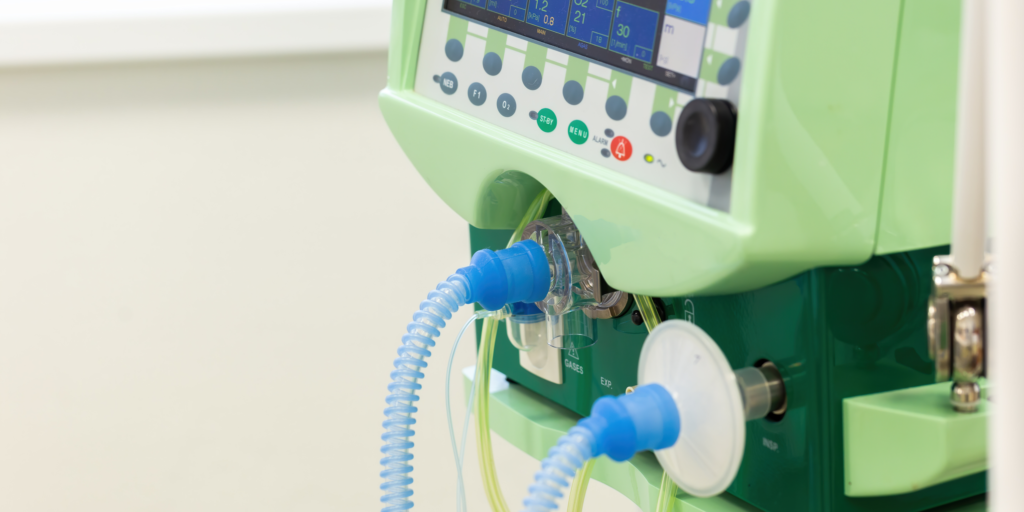Where we examine Medicare coverage and how it might support vital medical devices, ventilators, and feeding tubes are important instruments. These devices keep individuals who need help breathing or eating healthy and comfortable.
The government health insurance program Medicare serves seniors. It also includes younger disabled people and end-stage renal disease patients. Accessing optimal treatment for you and your family requires understanding Medicare coverage and how it pertains to medical devices like ventilators and feeding tubes.
What is a Ventilator and When is it Needed?
Respiratory patients need ventilators to survive. What is a ventilator and when is it needed? A ventilator, sometimes called a mechanical ventilator or breathing machine, helps people breathe when they can’t. The lungs receive oxygen-rich air while carbon dioxide is removed.
Ventilators are used in many scenarios. Due to lung dysfunction, COPD and cystic fibrosis patients may need help breathing. Patients recuperating from trauma or severe respiratory distress can use ventilators during surgeries or in intensive care units. Ventilators can help with breathing and provide varied amounts of support. Patients may need continuous ventilation or intermittent support during sleep.

Healthcare providers determine whether to employ a ventilator based on each patient’s needs and conditions. Before recommending ventilation, they evaluate oxygen levels, respiratory rate, and health. People who can’t breathe need ventilators. These gadgets aid breathing for patients with persistent respiratory disorders or transient issues after surgery or trauma.
How Medicare Covers Ventilators
Medicare coverage is vital for many ventilator users. Ventilators save lives by helping people breathe. It supports respiratory sufferers by supplying oxygen and removing carbon dioxide.
Fortunately, Medicare covers ventilators in certain conditions. A patient must have a doctor’s prescription for a ventilator to be covered. Additionally, the device must be purchased from a Medicare-participating DME supplier. Medicare Part B usually covers 80% of ventilator rentals or purchases if these criteria are met. The patient might pay 20% out of cash or use supplemental insurance.
You should know that Medicare coverage depends on your situation and plan. Therefore, engage with healthcare doctors and insurance representatives to understand and optimize advantages.
Navigating healthcare systems can be difficult, but knowing how Medicare covers important equipment like ventilators can make all the difference in getting appropriate care without financial strain.
Understanding Feeding Tubes and Their Benefits
Feeding tubes, often called enteral feeding tubes, help those who cannot eat or swallow. Stroke, cancer, and neurological patients may need these tubes to survive.
The benefits of feeding tubes are many. They guarantee people get enough nutrients and water to stay healthy. People who have trouble swallowing meals or drinks need this.
In patients with poor appetite or oral intake, feeding tubes can assist in regulating weight loss and prevent malnutrition. By making tube medicine administration easier, they can help.
Both patients and caregivers find feeding tubes convenient and comfortable. They provide reliable nutrition without hand-feeding assistance throughout meals.
It’s crucial to understand that feeding tubes vary by need. Gastrostomy (G-tube) or percutaneous endoscopic gastrostomy (PEG) tubes are placed directly into the stomach through a small abdominal cut, while jejunostomy (J-tube) tubes are placed directly into the small intestine.
To provide effective care for feeding tube recipients, one must understand how they work and their benefits. This approach requires the assistance of healthcare specialists who can explain Medicare coverage for these devices.
Medicare Coverage for Feeding Tubes
Medicare covers feeding tubes if certain conditions are met. A doctor must first decide if a feeding tube is needed. Their condition must prohibit them from getting enough nourishment from oral ingestion.
Coverage also depends on the feeding tube type. NG and PEG tubes are usually covered by Medicare. NG tubes are put through the nose into the stomach, while PEG tubes are implanted through an abdominal incision. Medicare covers feeding tubes, but not all supplies and services. This includes tube feeding formula, vitamins, and maintenance and cleaning equipment.

Work closely with your healthcare provider and follow their paperwork and billing code criteria to secure Medicare coverage. Medicare coverage might be confusing, but knowing your rights and alternatives is essential to getting the best care without breaking the bank. Keep up with Medicare coverage and communicate with your healthcare team to make this process easier.
Tips for Navigating Medicare Coverage for These Devices
Medicare can be complicated, but it doesn’t have to be. Tips for ventilators and feeding tubes will help you comprehend and maximize their benefits.
Knowing Medicare’s device guidelines is crucial. Understanding coverage requirements for each device can save you time and trouble.
Contact these healthcare specialists. They can assist you in understanding the process and getting coverage.
Maintain detailed medical records for your ventilator or feeding tube needs. Doctor’s notes, test results, and other medical necessity documentation are included.
Be sure to ask questions. Medicare representatives help you understand your coverage options and requirements. Their experience might make all the difference in effective care.
Consult Medicare advocacy or support groups. Many of these sites are designed to help Medicare beneficiaries navigate complex healthcare systems.
These suggestions will help you negotiate Medicare ventilator and feeding tube coverage. Knowledge is power when campaigning for your health!


